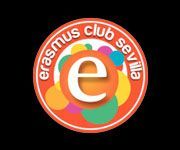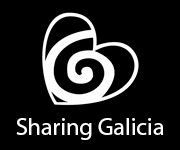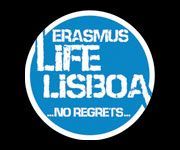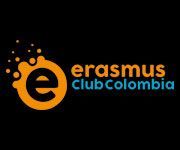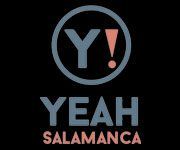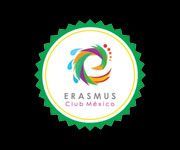Bilbao is rich when it comes to art and culture. Every corner of the city is special in a certain way and the traditions of the Basque country are visible in every step you take.
Guggenheim Museum
Once you arrive in Bilbao, in the centre of the city, you´ll find the unique Guggenheim Museum, which has become a symbol of the city since 1997. This Museum, designed by Frank O. Gehry, is one of the most impressive cultural structures in the world. It is said that you are never seeing the same Guggenheim Museum, because the impact of the sun rays and the reflection of the clouds on the titanium structure change its tonality almost everyday; transforming the museum according to the weather. The museum hosts different artistic exhibitions during the year. In addition, in front of the museum you can find the Puppy guarding the city. This artwork comprises 30.000 flowers and was designed by Jeff Koons. You can also find many important artworks around the museum, such as the Mum, a huge Spider designed by Louise Bourgeois and the Fire Fountain by Yves Klein.
San Mamés Berria
The new stadium of the local team, Athletic Club, is also one of the most known places of the city. The vast majority of bilbaínos and bizkaitarras are proud of Athletic Club. For some of them, Athletic is not just a football team, it is also a way of life.
San Mamés Stadium is also known as “The Cathedral”, a temple where good football is worshiped and where this sport is experienced in an unique way. Attending a football match in San Mamés, surrounded by Athletic Club Fans singing the anthem and supporting the team until the last minute is an unforgettable experience.
Azkuna Zentroa
Previously known as La Alhóndiga and renamed to Azkuna Zentroa to honor Iñaki Azkuna, Mayor of Bilbao for 15 years, Azkuna Zentroa is a space dedicated to culture and leisure. In this building, music, cinema, literature, theatre, dance and any other form of art has special importance. Moreover, in this building you can also enjoy a gym: Mens sana in corpore sano.
Basílica de Begoña
Church of Our Lady of Begoña (Basílica de Nuestra Señora de Begoña) is a gothic style temple where the Virgin Mary is worshiped. The temple is considered a point of cultural interest and every citizen has a special affection towards the amatxu of Begoña.
Casco Viejo
El Casco Viejo (the Old Town), also known as Las Siete Calles is the heart of the city, the origin of Bilbao. In Casco Viejo there are various atmospheres, different versions of the city, from the most traditional to the most alternative. It’s a place where the diversity of the inhabitants of Bilbao is present in every corner. There are always people in the bars and shops, so you can start the day visiting the Old Town and its shops and finish the day eating some tasteful pintxos.
Mercado de la Ribera
Located in Casco Viejo, Mercado de la Ribera is a prestigious market due to the quality of the products they sell. Apart from that, it is the biggest covered market in Europe with more than 10.000m2 of surface area. Recently, this enigmatic building has been remodeled, maintaining its original structure, but adding some modifications to adapt its appearance to the present. Since the remodeling there is also a bar-restaurant on the ground floor: La Ribera. It turned into a nice place to enjoy live music, especially of the alternative and indie genre..
Teatro Arriaga
Built at the end of the 19th century, the Arriaga Theatre is one of the most emblematic buildings of the city. The Theatre is called Arriaga in honor of the local music composer Crisóstomo de Arriaga, also known as the Basque Mozart due to his musical talent since his childhood. During each year, the Arriaga Theatre hosts the best plays, concerts, monologues, concerts and coplas. The Theatre is also known for being the place where the Aste Nagusia starts every year with the traditional txupinazo. Aste Nagusia is the name for the local festival, which normally lasts 10 days.
Guggenheim Museum
Once you arrive in Bilbao, in the centre of the city, you´ll find the unique Guggenheim Museum, which has become a symbol of the city since 1997. This Museum, designed by Frank O. Gehry, is one of the most impressive cultural structures in the world. It is said that you are never seeing the same Guggenheim Museum, because the impact of the sun rays and the reflection of the clouds on the titanium structure change its tonality almost everyday; transforming the museum according to the weather. The museum hosts different artistic exhibitions during the year. In addition, in front of the museum you can find the Puppy guarding the city. This artwork comprises 30.000 flowers and was designed by Jeff Koons. You can also find many important artworks around the museum, such as the Mum, a huge Spider designed by Louise Bourgeois and the Fire Fountain by Yves Klein.
San Mamés Berria
The new stadium of the local team, Athletic Club, is also one of the most known places of the city. The vast majority of bilbaínos and bizkaitarras are proud of Athletic Club. For some of them, Athletic is not just a football team, it is also a way of life.
San Mamés Stadium is also known as “The Cathedral”, a temple where good football is worshiped and where this sport is experienced in an unique way. Attending a football match in San Mamés, surrounded by Athletic Club Fans singing the anthem and supporting the team until the last minute is an unforgettable experience.
Azkuna Zentroa
Previously known as La Alhóndiga and renamed to Azkuna Zentroa to honor Iñaki Azkuna, Mayor of Bilbao for 15 years, Azkuna Zentroa is a space dedicated to culture and leisure. In this building, music, cinema, literature, theatre, dance and any other form of art has special importance. Moreover, in this building you can also enjoy a gym: Mens sana in corpore sano.
Basílica de Begoña
Church of Our Lady of Begoña (Basílica de Nuestra Señora de Begoña) is a gothic style temple where the Virgin Mary is worshiped. The temple is considered a point of cultural interest and every citizen has a special affection towards the amatxu of Begoña.
Casco Viejo
El Casco Viejo (the Old Town), also known as Las Siete Calles is the heart of the city, the origin of Bilbao. In Casco Viejo there are various atmospheres, different versions of the city, from the most traditional to the most alternative. It’s a place where the diversity of the inhabitants of Bilbao is present in every corner. There are always people in the bars and shops, so you can start the day visiting the Old Town and its shops and finish the day eating some tasteful pintxos.
Mercado de la Ribera
Located in Casco Viejo, Mercado de la Ribera is a prestigious market due to the quality of the products they sell. Apart from that, it is the biggest covered market in Europe with more than 10.000m2 of surface area. Recently, this enigmatic building has been remodeled, maintaining its original structure, but adding some modifications to adapt its appearance to the present. Since the remodeling there is also a bar-restaurant on the ground floor: La Ribera. It turned into a nice place to enjoy live music, especially of the alternative and indie genre..
Teatro Arriaga
Built at the end of the 19th century, the Arriaga Theatre is one of the most emblematic buildings of the city. The Theatre is called Arriaga in honor of the local music composer Crisóstomo de Arriaga, also known as the Basque Mozart due to his musical talent since his childhood. During each year, the Arriaga Theatre hosts the best plays, concerts, monologues, concerts and coplas. The Theatre is also known for being the place where the Aste Nagusia starts every year with the traditional txupinazo. Aste Nagusia is the name for the local festival, which normally lasts 10 days.



